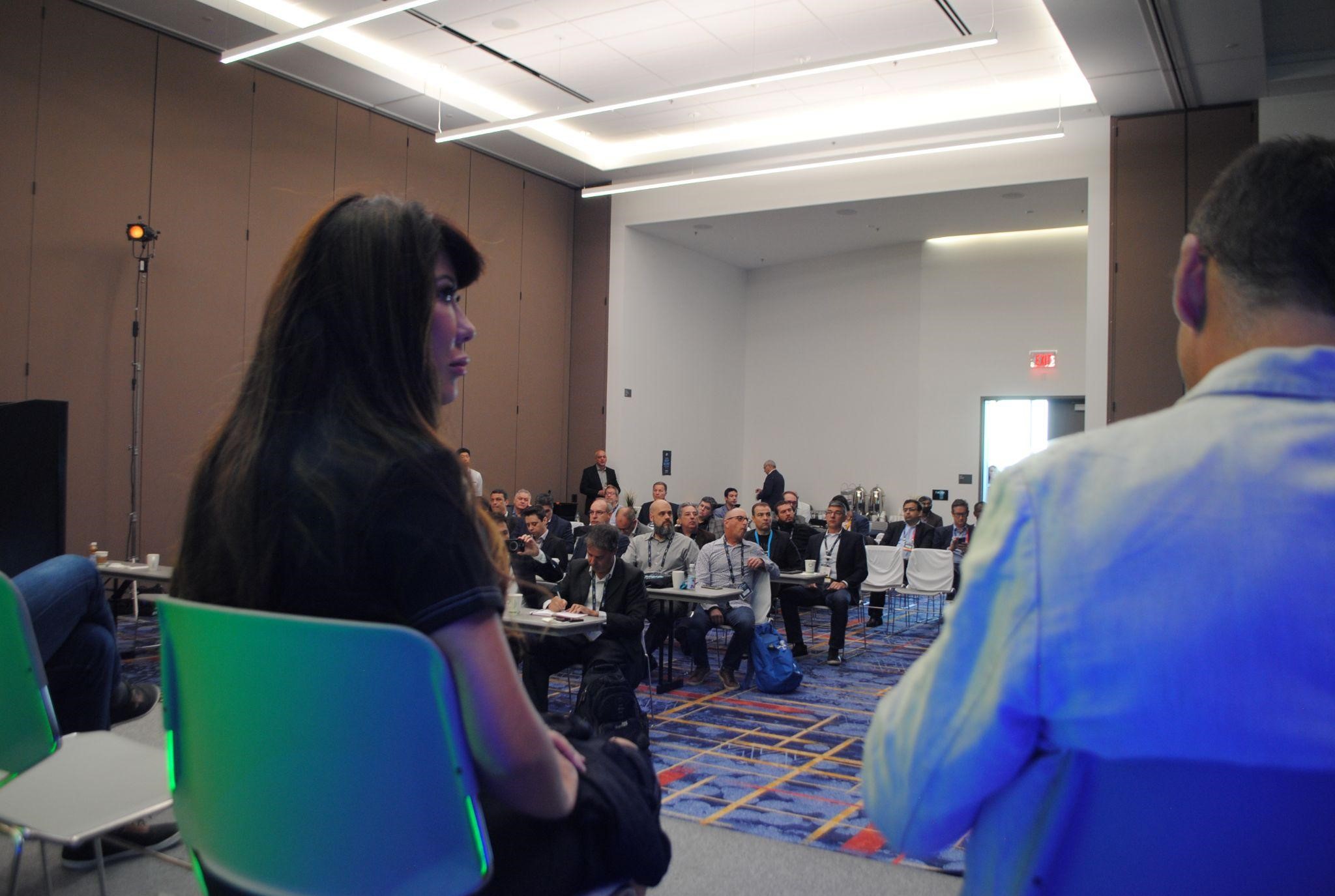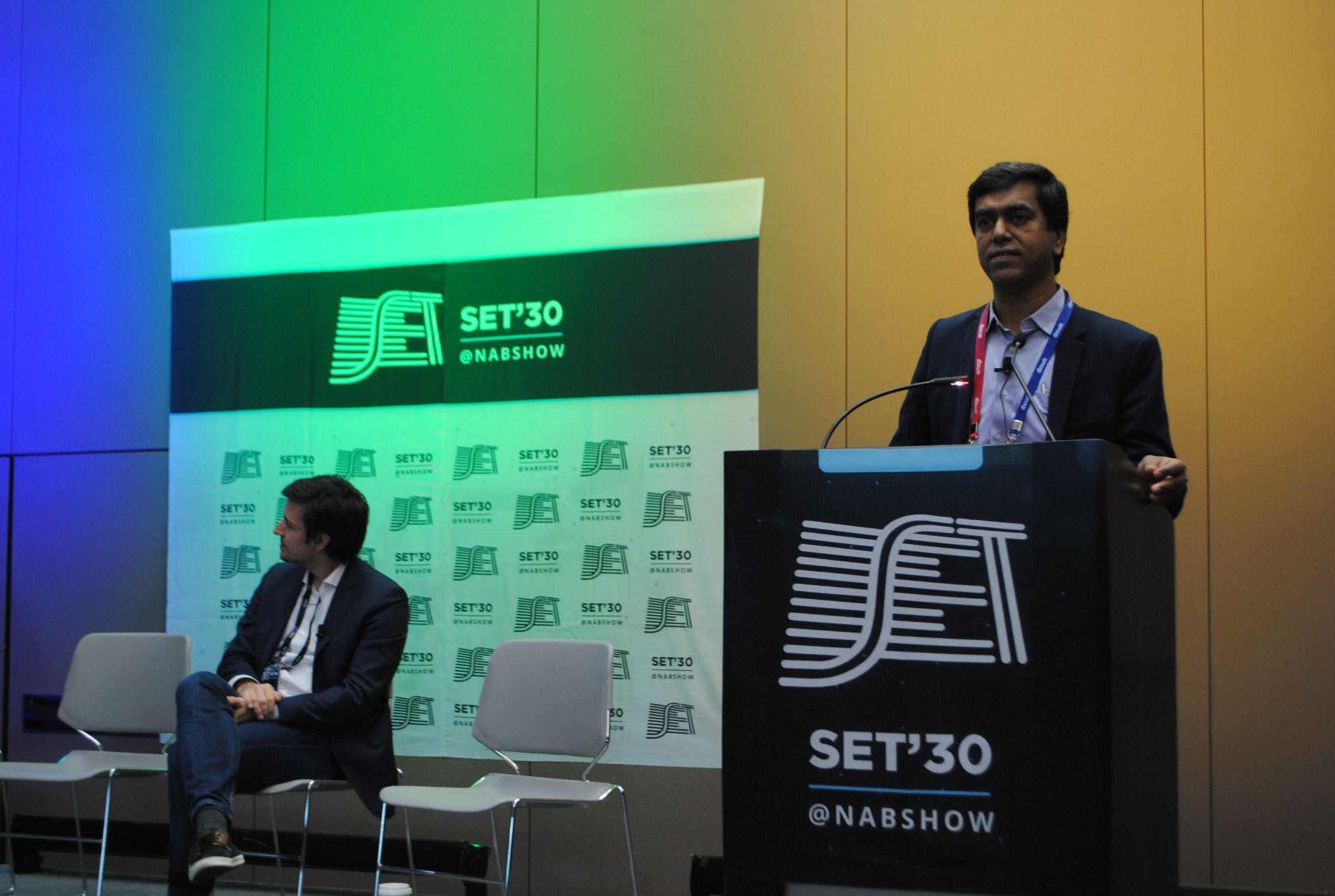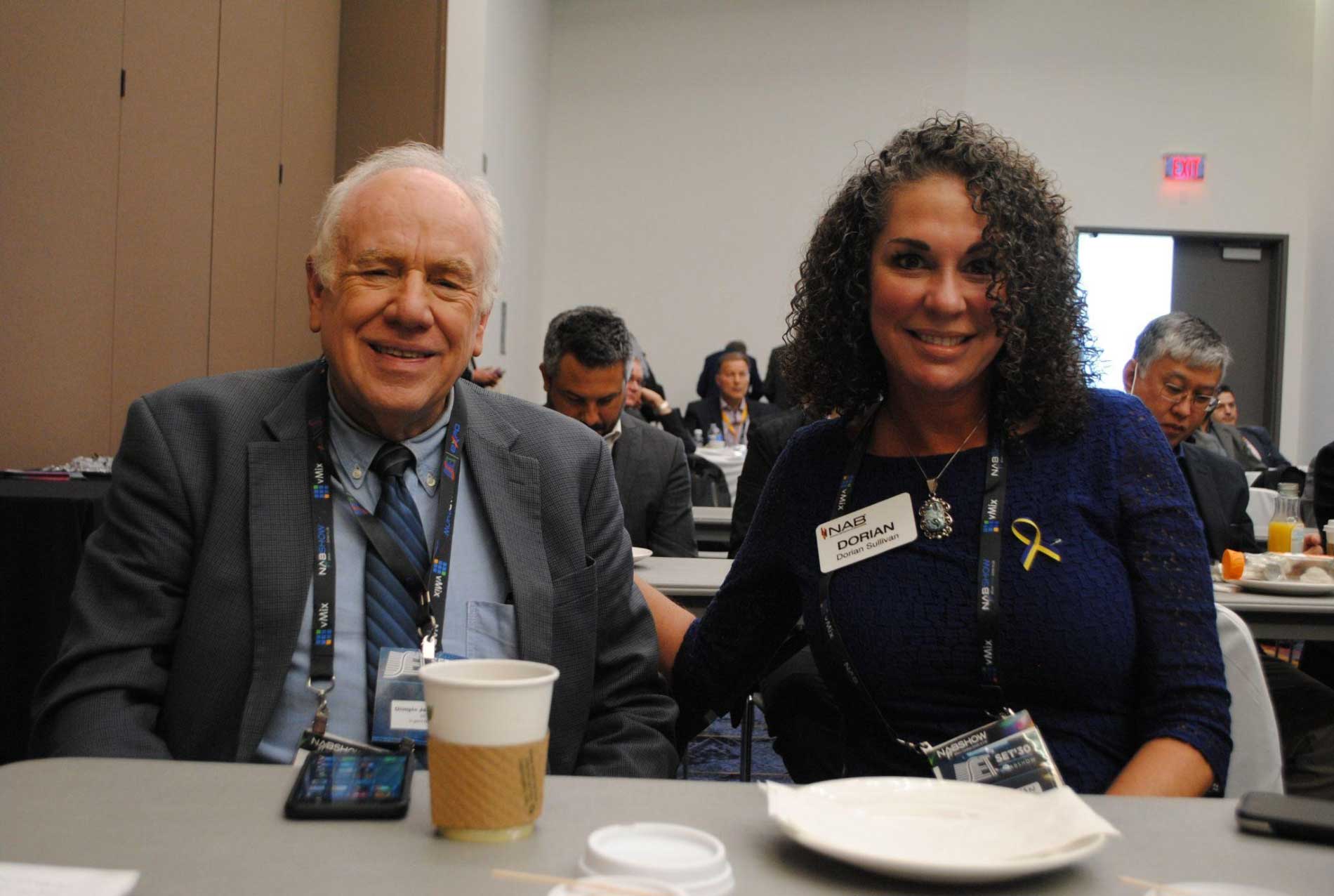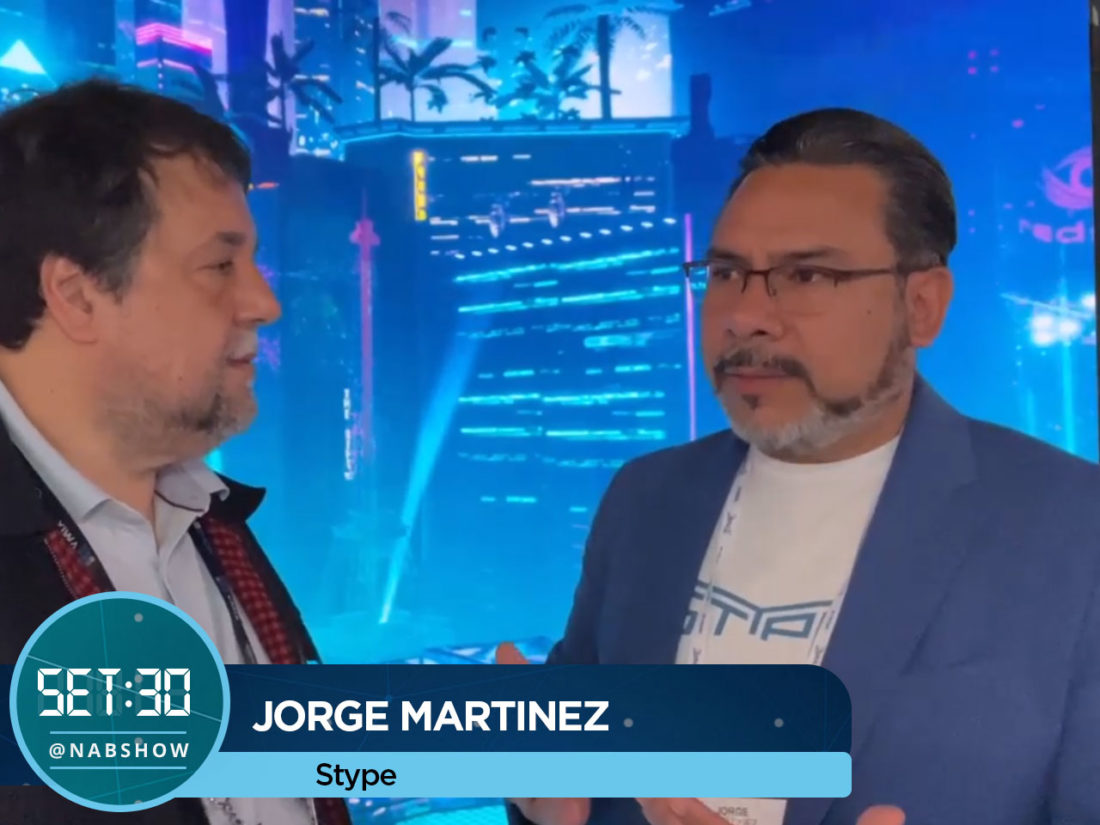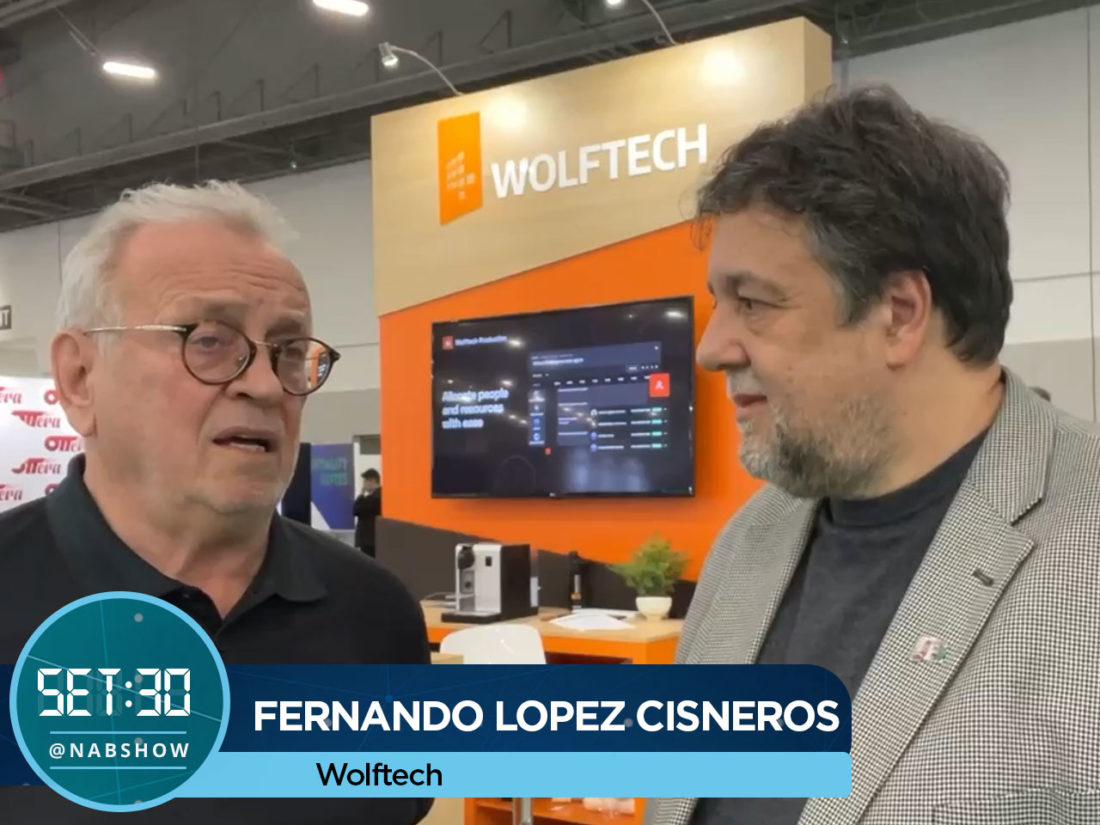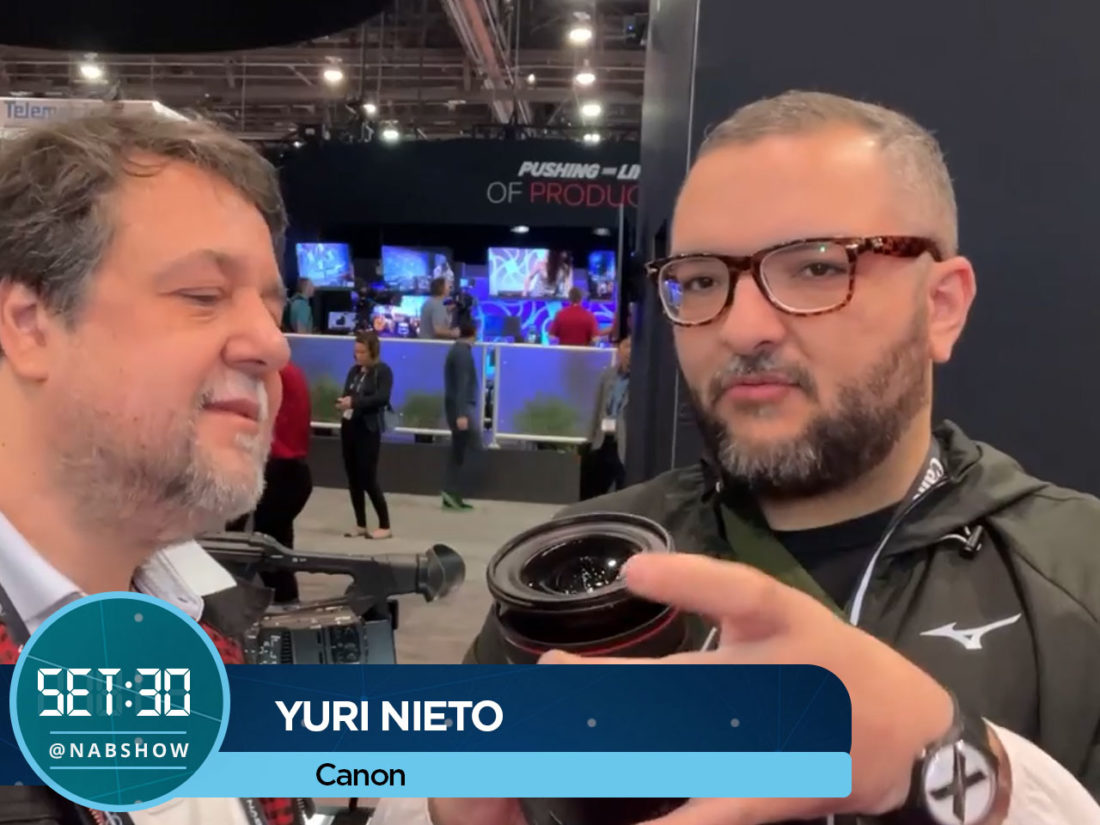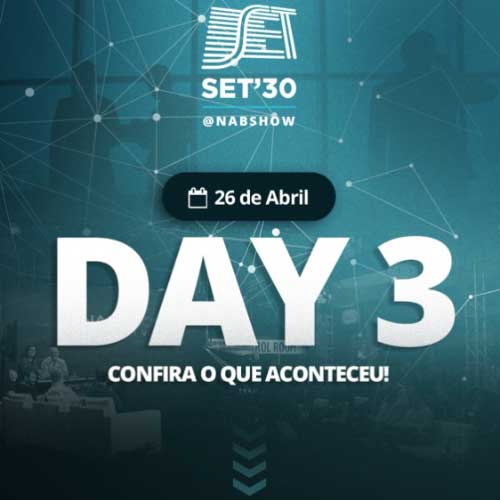
Highlights from the last day of SET’30 at the NAB Show
The third and final day of SET’30 exceeded expectations, with more than 100 industry professionals in attendance, international speakers and representatives from Brazilian broadcasters talking about the main technology and business issues in the sector.
In the first lecture of the day, “The Streaming era: What’s next?, the moment of digital platforms, their main competitive challenges and the new monetization models were discussed.
Moderated by Maurício Félix, Director of Infrastructure and Security at Globo, the panel was attended by Yassue M. Inoki, General Manager Latin America at Phentera, Srini, Chief Revenue Officer at Amagi, and Stefan Lederer, CEO and Co-Founder at Bitmovin.
- Maurício Félix, Diretor de Infraestrutura e Segurança da Globo, o painel contou com a participação de Yassue M. Inoki, General Manager Latin America da Phentera, Srini, Chief Revenue Officer da Amagi, e Stefan Lederer, CEO e Co-Founder da Bitmovin.
- Yassue M. Inoki, General Manager Latin America da Phentera
- Srini, Chief Revenue Officer da Amagi
- Stefan Lederer, CEO e Co-Founder da Bitmovin.
Yassue Inoki introduced Phentera and said that the goal is to improve the experience and monetization of partner companies. “We’re in a wonderful time, we have a world of options to explore to add video quality and user experience.”
Srini of Amagi analyzed the market context, released some interesting data and looked at end-to-end services and how live, linear and VOD distribution of streaming programming can be improved. He also talked about cloud-based SaaS and how technology platforms have improved with this type of technology. “Today, it is necessary to think about fast business models when developing a platform for channels, whether linear or not, with SaaS that can also include targeted advertising”.
Stefan Lederer from Bitmovin explained the solutions and how it is possible to maximize broadcasting rights and how to think about different supports and platforms from broadcast, to OTT and telcos, always thinking about low latency, DRM, AD and quality of experience, among other points important.
Laderer even advanced with AV1 to 4K SD bitrates, and spoke of the case of Globo in 8K, as a success story. It closed with UHD and super-resolution, highlighting Ml-models and new ways of encoding audio.
- Olimpio José Franco (SET) e Dorian Sullivan (NAB)
- Pavilhão brasileiro
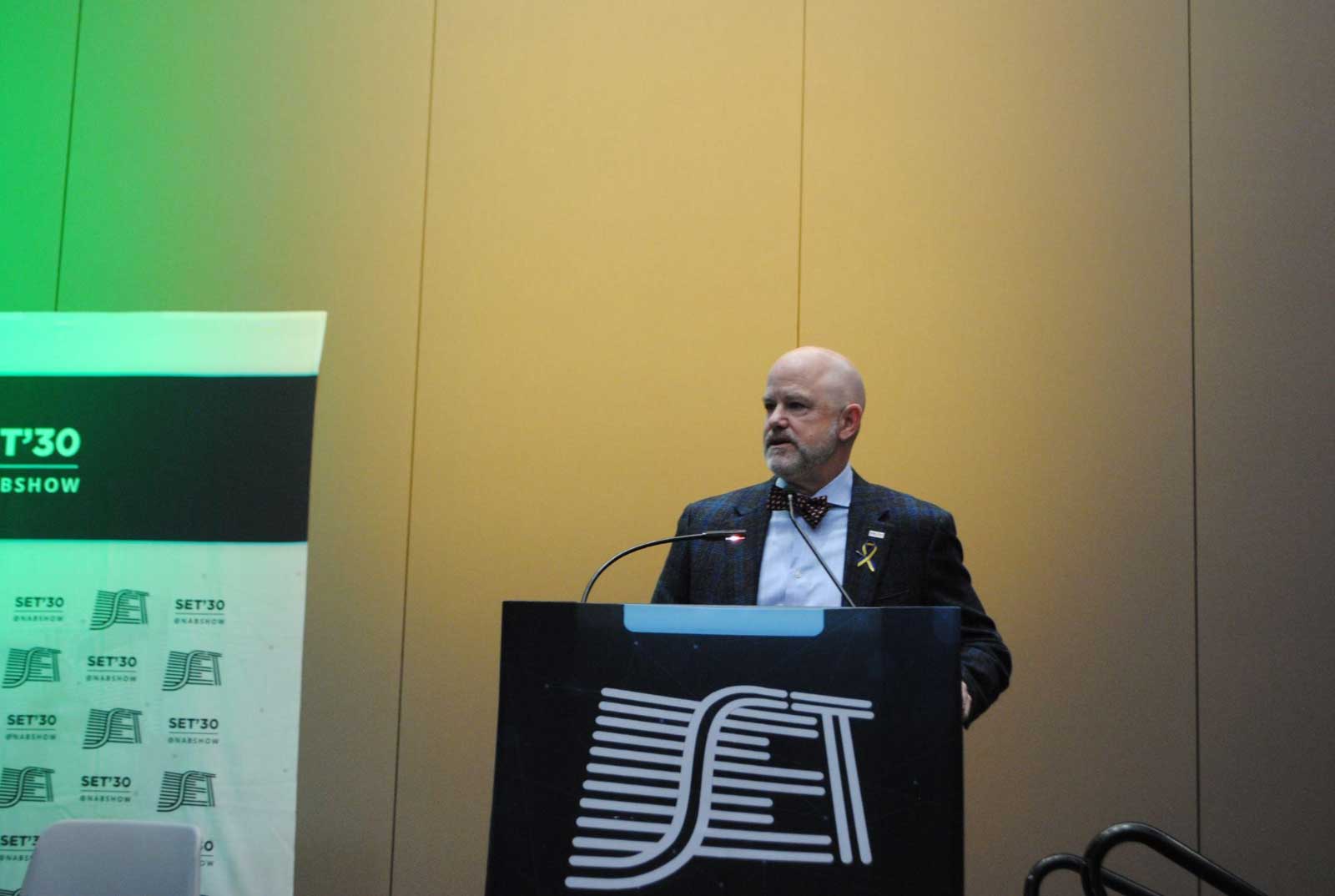
Last day’s Keynote featured an interesting analysis by Sam Matheny, Executive Vice President and Chief Technology Officer at NAB, on technology trends, transitions, and the development timeline for ATSC 3.0. Matheny explored the process of implementing the standard, and envisioned the future. He said that in the United States, open TV is gaining relevance and today it reaches 4 times as many audiences as it did 10 years ago.
“Today, ATSC has 259 channels in the United States, with 63 stations, 51 different markets” and said that the transition to ATSC 3.0 is going faster than the one that went to ATSC 1.0”.
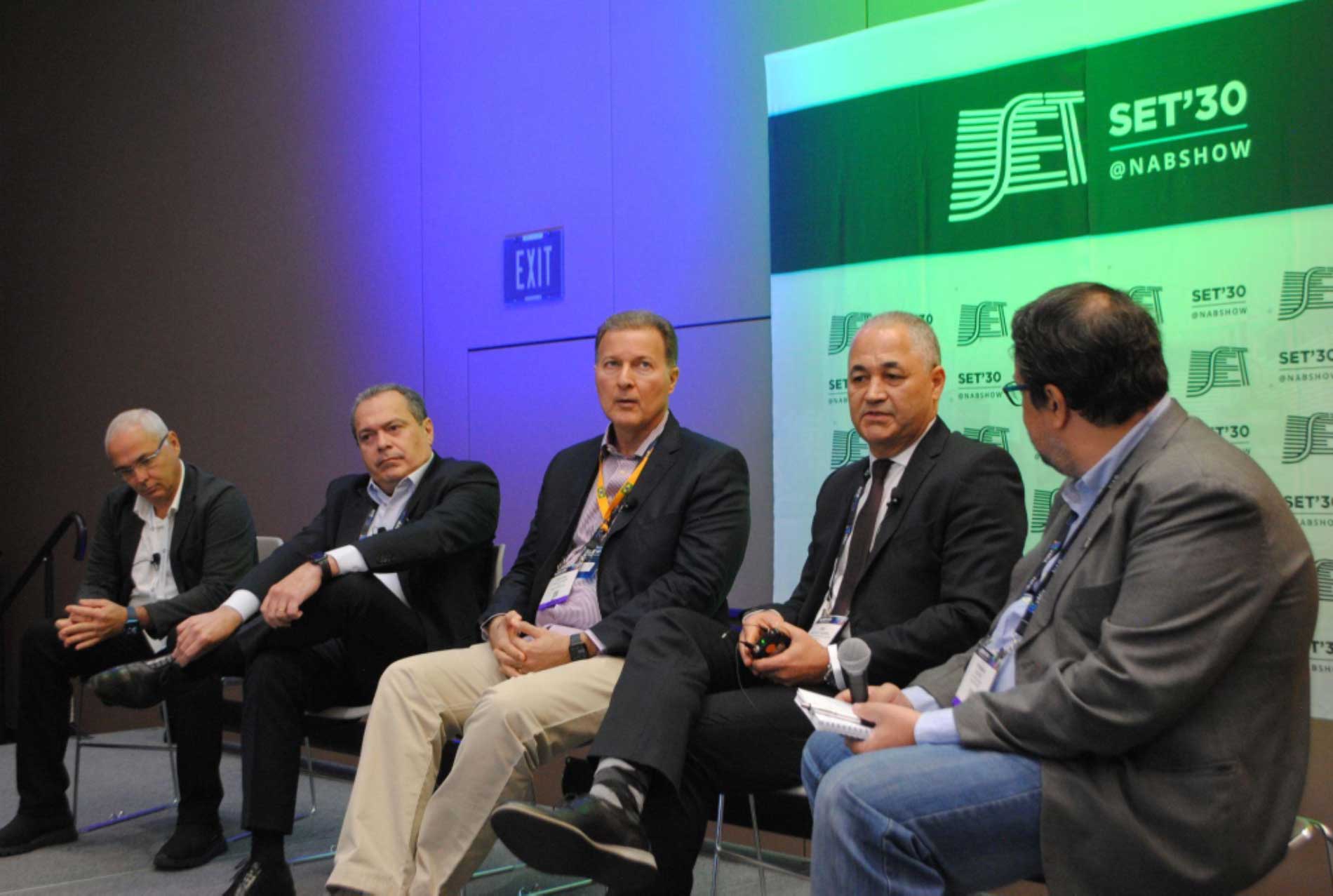
The lecture was moderated by Prof. Doctor Fernando Carlos Moura, Editor-in-Chief of Revista da SET and had as speakers Roberto Franco, Counselor of SET and VP of Institutional and Regulatory Affairs of SBT; José Marcelo Amaral, Director of Engineering and Operations – RecordTV; Phelippe Daou Jr, CEO of Rede Amazônica and Raymundo Barros, counselor at SET and Director of Strategy & Technology at Globo.
The final panel discussed the state of the art of Brazilian television, envisioned its future and analyzed the process of cloud-based, SaaS, MPEG-H audio and the metaverse. It was also highlighted that technology has to be increasingly associated with the business and that the user experience has to be a guide for the production, distribution and revenue of broadcasters.
Raymundo Barros, counselor at SET and Director of Strategy & Technology at Globo, said that the cloud is a path of no return, that it is necessary to understand the user and work together with him. Barros also said that Google’s cloud was instrumental in carrying out remote production and hosting sporting events such as coverage of the Tokyo 2020 Olympic Games.
Roberto Franco, SET Advisor and VP of Institutional and Regulatory Affairs at SBT, said that “the world today is Beta, but it has to convert to SaaS”, and for that, media companies need to understand the ecosystem of production and the new way of delivering content.
José Marcelo Amaral, Director of Engineering and Operations at RecordTV, stated that it is necessary to continue investing in TV, but to understand the user and, with him, their consumption habits. He also said that Record is thinking of developing an own delivery system via streaming, extending its CDNs.
Phelippe Daou Jr, CEO of Rede Amazônica, positively evaluated the use of MPEG-H audio on Amazonas SAT, the first channel in Latin America to broadcast 24×7 with this technology, and that this is part of the group’s strategy to reach all viewers of 5 Northern states where the station has coverage.





